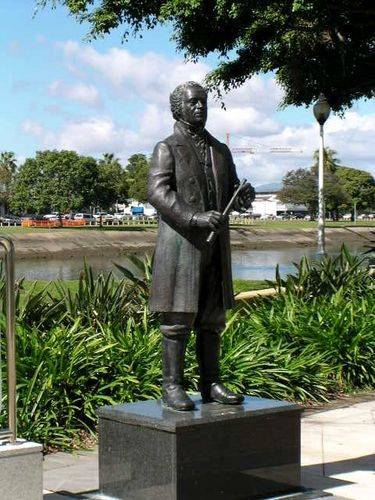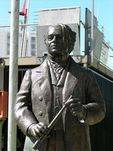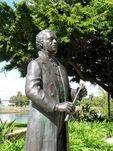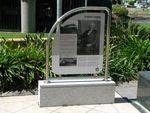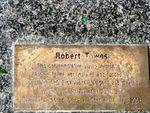
Robert TownsPrint Page 
The sculpture commemorates Robert Towns who helped fund much of the infrastructure along Queensland`s northern east coast in the 19th century, creating the foundations of today's northern economy.
The sculpture has caused some controversy and in 2013 South Sea Islander, Torres Strait Islander and Aboriginal people gathered in Townsville to protest veneration of a man they consider a ‘blackbirder and a slave trader’.
Captain Robert Towns, 1863 entrepreneur, brought the first New Hebrideans to Queensland for work on his cotton plantation in the Logan district. One of his skippers was accused of kidnapping and some recruiters dispensed with niceties and simply hauled men on board. Queensland veered dangerously close to slavery in the late 1860s and early 1870s when "recruiters" ranged the South Seas in search of Kanakas (Hawaiian for "men") to work the state`s sugar and cotton plantations. In the end, it was Federation that brought the Kanaka era to a close although Kanakas would continue to toil on Queensland plantations until 1907.
With William Wentworth, Robert Towns arranged a shipment of 56 Indian coolies who arrived in a state of starvation in 1846. These coolies went either to labour on Wentworth's pastoral properties such as Burburgate on the Namoi River or worked as servants at his Vaucluse House mansion. Some were leased out to Helenus Scott's Glendon property in the Hunter Valley.
Around another 1500 Chinese coolies were shipped into Australia up to the year 1854 with Robert Towns and Gordon Sandeman again being the principal organisers of the trade. The poor conditions on board the vessel Spartan, chartered by Robert Towns, sparked a rebellion of coolies against the crew of the ship. The second-mate and ten of the Chinese were killed before the captain was able to regain control. Out of nearly 250 coolies who had embarked on Spartan, only 180 arrived in Australia.
In 1863, Robert Towns wanted to profit from the world-wide cotton shortage due to the American Civil War. He bought a property he named Townsvale on the Logan River and planted 400 acres of cotton. Towns also wanted cheap labour to harvest and prepare the cotton and decided to import Melanesian labour from the Loyalty Islands and the New Hebrides. Captain Grueber together with labour recruiter Ross Lewin aboard the Don Juan, brought 73 South Sea Islanders to the port of Brisbane in August 1863.
Towns specifically wanted adolescent males recruited and kidnapping was reportedly employed in obtaining these boys. Over the following two years, Towns imported around 400 more Melanesians to Townsvale on one to three year terms of labour. They came on the vessels Uncle Tom (Captain Archer Smith) and Black Dog (Captain Linklater). In 1865, Towns obtained large land leases in Far North Queensland and funded the establishment of the port of Townsville. He organised the first importation of South Sea Islander labour to that port in 1866. They came aboard Blue Bell under Captain Edwards. Apart from a small amount of Melanesian labour imported for the beche-de-mer trade around Bowen, Robert Towns was the primary exploiter of blackbirded labour up till 1867.
Location
| Address: | Ogden Street, Townsville, 4810 |
|---|---|
| State: | QLD |
| Area: | AUS |
| GPS Coordinates: | Lat: -19.260332 Long: 146.817666 Note: GPS Coordinates are approximate. |
Details
| Monument Type: | Sculpture |
|---|---|
| Monument Theme: | People |
| Sub-Theme: | Industry |
| Artist: | Jane Hawkins |
| Link: | http://adbonline.anu.edu.au/adbonli… |
Dedication
| Actual Monument Dedication Date: | Wednesday 18th May, 2005 |
|---|
Robert Towns
This commemorative statue in bronze of Robert Towns was initiated and funded by Townsville CBD Promotions, designed and created by artist Jane Hawkins in 2004 and unveiled by Councilor Jack Wilson on 18 May, 2005.


